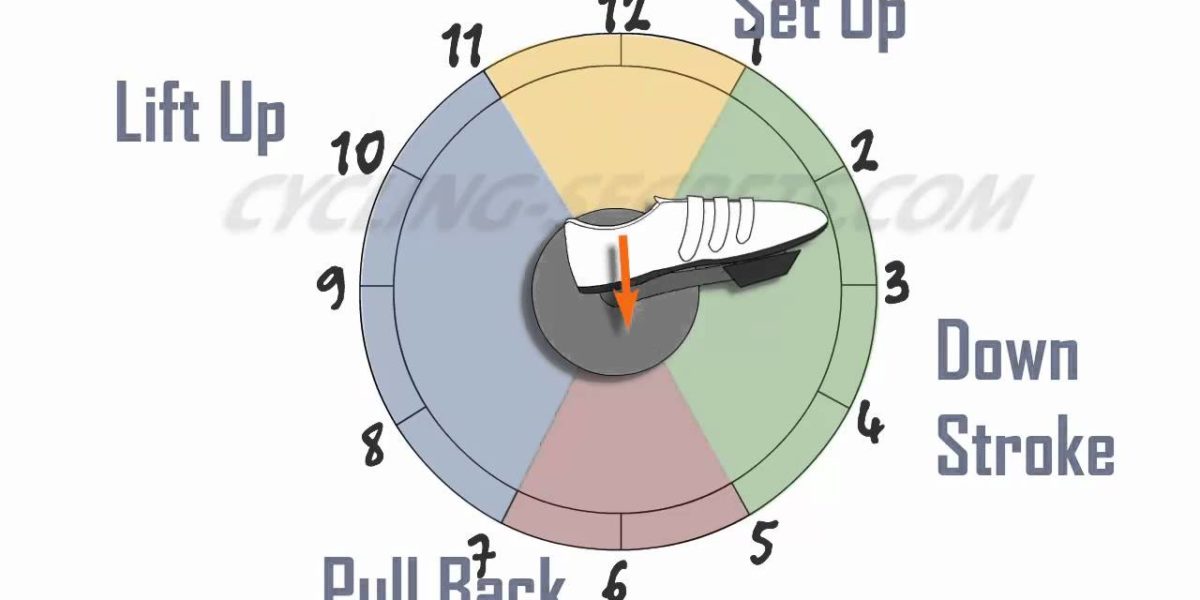If you are a cycling enthusiast, a beginner on the bike or an aspiring podium place getter, at some point you will have thought about the technique of pedalling. The pedal stroke all comes down to efficiency and reducing the amount of power loss through each phase of the stroke.
With a proper technique, not only you will be able to ride faster, but also with more efficiency, allowing you to ride for further. Every action your body moves through while pedalling engages a different set of muscles and tendons. Increasing efficacy through each part of the pedalling stroke will make sure that all muscle groups are successfully activated in a balanced manner.
In this Davey Black Melbourne Triathlon Club blog, we’ll explain how by practicing perfect technique, we can create a big difference in our overall speed and energy output while on the bike.
In order to develop the idea further, it is necessary to imagine the pedalling action the same way we would see a clock, numbered 1 to 12. What we want to make sure is that the pedal is consistently moved with pressure (power) being applied. This means activating the body in a way that the forces that are put into the pedal are always functional to what we want to do.
If we divide our pedal stroke clock into 4 areas, we will be able to see the 4 different and very important parts of the action.
- Downstroke: This relates to the areas ranging from 1 o’clock to 5 o’clock. This is where your foot pushes the pedal down with its maximum force. This is usually where most of the power comes from as it is not only done by the muscles themselves, but also body weight and gravity do their part in helping you push down with a high force. Here is where your thighs and glutes start doing their job. Through this phase you want to have your heel pushing downwards in line or slightly lower than your toes.
- Pull Back: From 5 o’clock to 7 o’clock we move the foot back in order to apply enough force to go through this portion as smoothly as possible. A good mental tip is to imagine as if you had stepped into dog poo and you want to wipe it off the bottom of your shoe on the grass. Through this phase we want to lift the heel above the level of the toes
- Lift Up: From 7 o’clock to 11 o’clock. As the name implies, it is where you pull your foot upwards. The amount of pull you engage through this phase will change depending on if you are riding on the flat or riding up a hill or into a head wind. When riding up hill or into a head wind, you will pull up with more force than you would if you were on the flat. Remember that your leg should be the one pulling its own weight and not being pushed up by the other foot pushing down on the opposite pedal. Through this phase your heel will remain slightly above the level of your toes.
- Set Up: From 11 o’clock to 1 o’clock. Your foot kicks forward towards the start of the next pedal stroke. This is the most difficult part of the pedal stroke. It’s important to maintain a smooth transition here as there is little to no power being applied to the pedal. Through this phase of the stroke, you will bring your heel from above the level of your toes and start to level it out as you move across the 12 o’clock apex.
The main goal for improving cycling efficiency is to collate all the pedal stroke phases together so that you can get the best out of them. It might require a bit of practice and some long kilometres to get used to the technique and to get comfortable doing it. The more drills you do, the more session you get under your belt, the closer you will be to fully mastering the most efficient pedalling technique.
Your coach will have drills that are designed to help you understand and isolate each phase of movement and become confident with the transition from one phase to the next.
The more you train and more focus you put into this technique, the easier it will be for your body to get comfortable moving through your pedalling technique and integrating each part successfully and comfortably. You will learn to see when and how to pedal when sprinting, climbing, riding on a flat course, facing the wind and any other condition or speed you might want to think of. Practice, knowledge and consistency are the secrets behind a successful and efficient rider.
Photo credit: www.cycling-secrets.com

